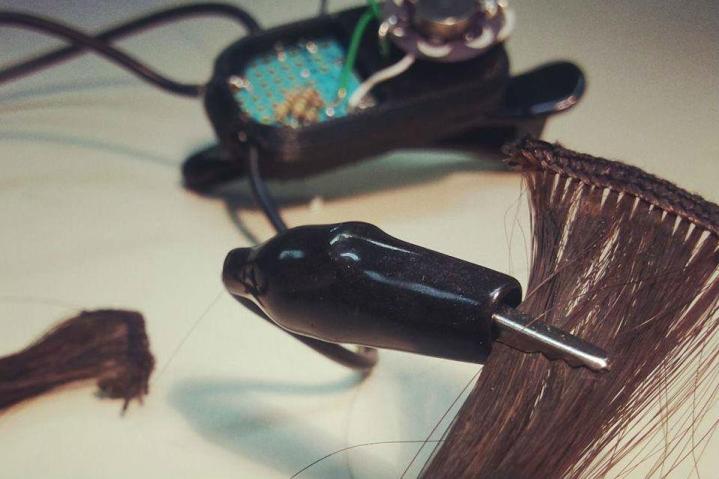
Hairware, as creator Katia Vega calls it, is basically a set of high-tech hair extensions that can sense when they’re being touched. The extensions can be used as a wireless input device for mobile phones, and can be programmed to open applications, send preset messages, or broadcast a person’s location — all without the user visibly interacting with their phone.
Here’s how it works. Despite their natural-looking appearance, Harware extensions are plated with an uber-thin layer of conductive material. The touch of a user’s fingers changes the hair’s ability to store an electric charge ever so slightly. This change is then picked up by an Arduino micro-controller, which interprets the input and beams it to your smartphone via Bluetooth.
A single stroke, for example, could be programmed to activate an app, while a double stroke could be used to toggle your phone’s location tracking. Continuous twiddling, of the type we see in nervous high-schoolers, could be configured to do something else entirely — such as send out an SOS message. To avoid accidental activation, Vega has even built an algorithm into Hairware that learns your behavior, and can discern between intentional and unintentional hair stroking.
The range of potential applications is huge. Vega hopes to commercialize Hairware as a personal security device for women, but she also foresees it being used by intelligence agencies, or even as a research tool for behavioral scientists.
And don’t worry guys — the first Hairware prototypes are designed for women, but Vega is already working on a version that fits into beards.




